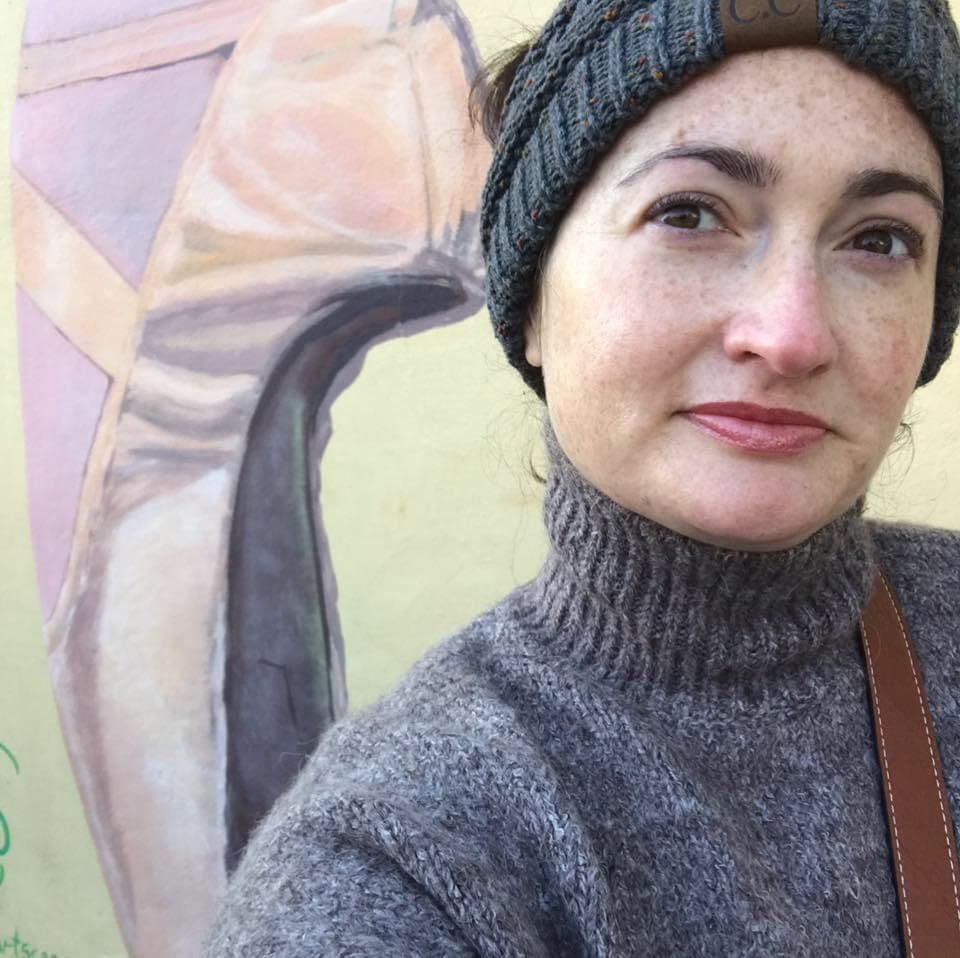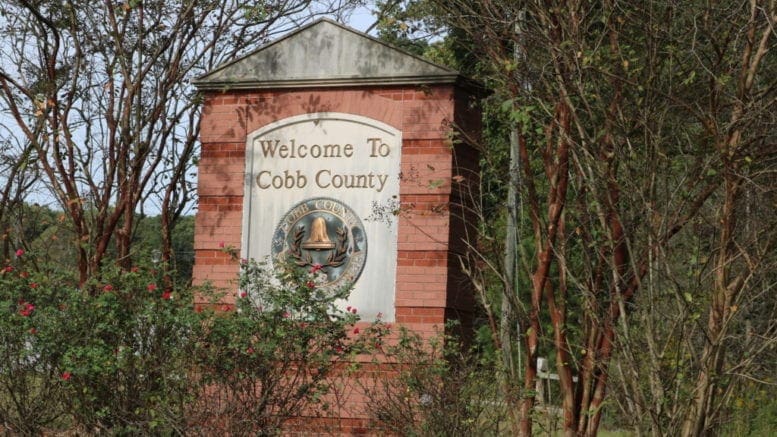By Rebecca Gaunt
Cynthia Johnson was given two days of pain medication and a referral to a specialist for a fractured shoulder in July. She can’t afford to see the specialist because she doesn’t have health insurance.
Johnson is not alone. According to the 2019 Census Bureau’s Small Area Health Insurance Estimates report released in June, 14.4% of Cobb County residents under 65 (nearly 95,000 people) do not have any health coverage.
In states that expanded Medicaid, people living at or below 138% of the poverty level may qualify for Medicaid. However, Georgia did not participate in the expansion.
In Cobb, 44.4% of working age adults ages 18-64 who meet the expansion income criteria are uninsured. That’s 25,000 people.
Johnson has lived in Cobb for 14 years. Before her daughters turned 18, the family qualified for Medicaid. Once they became adults, she lost her coverage. She said she has tried to purchase coverage through the health insurance marketplace, but can’t afford any of the plans. Her daughters, however, successfully obtained plans through the marketplace but still struggle to find providers who accept them.
Prior to the COVID-19 pandemic, Johnson got sick and was hit with a $10,000 bill. She said she applied for the hospital’s financial assistance program, but never received an approval or denial. Her bill was sent to collections which damaged her credit. She has since worked things out with the hospital, but now she has new bills stacking up because of her injury.
“I’ll probably have to go back to the hospital and incur another bill,” she said.
For comparison, the uninsured rate for all of Georgia is 15.7%. That’s nearly 1.4 million Georgians. When it comes to the 18-64 demographic at or below 138% of the poverty level, the percentage jumps to 26.6% or more than a half million people. Georgia has the fourth highest rate of uninsured residents in the country behind Texas, Oklahoma and Florida.
Suzen Fite lives in Marietta with her severely disabled daughter. Her daughter qualifies for SSI and Medicaid, but mom has to do without.
Even with her daughter’s Medicaid coverage, she still struggles to find therapy providers that will accept it. She also took the state of Georgia to court to maintain her daughter’s at-home nursing hours via the Georgia Pediatric Program (GAPP).
“It is impossible for a single parent to work because someone has to be here with the nurse, Fite said. “It’s mostly the parents that suffer. I cannot afford insurance for myself and Medicaid will not cover me.”
How does Cobb’s uninsured rate compare to nearby counties? The chart below compares the rates of the uninsured at all income levels under the age of 65 to the rate for residents between 18 and 64 at or below 138% of the poverty level.
2019 Uninsured Rates By County
| County | % All | Number | % Low income | Number |
| Bartow | 18 | 16,360 | 40.4 | 4,850 |
| DeKalb | 16.9 | 109,204 | 42.1 | 35,739 |
| Cherokee | 14.3 | 31,738 | 49.7 | 7,337 |
| Cobb | 14.4 | 94,503 | 44.4 | 25,004 |
| Douglas | 14.8 | 18,875 | 35.9 | 5,490 |
| Fulton | 12.6 | 114,040 | 32.9 | 34,865 |
| Gwinnett | 17.7 | 147,535 | 49.7 | 39,630 |
| Paulding | 13.7 | 20,564 | 39.7 | 5,018 |
Oconee County, in northeastern Georgia, had the lowest overall rate of uninsured residents in the state at 9.9%. For the low-income, 18-64 demographic the percentage jumped to 41.1.
Southeastern Atkinson County had the highest overall percentage of uninsured residents at 23.8%. For the low-income, working age demographic, 44.1% are uninsured.
Joan, a Powder Springs resident, lost her health insurance when the grant funding her position at Morehouse College ended. She couldn’t afford the costly monthly premiums for COBRA. In her former job, she was part of a program working to provide funding for health services to the public.
“I’m one of those families now,” she said of losing access to her doctors and prescriptions.
She told the Courier that she has been job hunting for a year. Joan has even expanded her search beyond her industry in her desperation to get insurance. Bills are coming in for a two-week hospitalization, but like Johnson, she got no response to her hospital application for financial assistance. Nor can she afford a marketplace plan.
“I’d like Georgia to receive federal funding for people like me,” Joan said. “I’m a contributing citizen still in the community.”
Georgia is one of 12 states that has not adopted Medicaid expansion through the Affordable Care Act. Instead, Gov. Brian Kemp rolled out a limited expansion plan called Georgia Pathways, a waiver program with a work, school or volunteer requirement. People up to 100% of the poverty line would be eligible.
People living up to 137% of the poverty line would be able to apply for the second waiver option under Georgia Pathways, which would establish an alternative to healthcare.gov and feature “reinsurance.”
The plan is still under federal review due to the work requirements, delaying the rollout.
According to KFF, a nonprofit focused on national health issues, three out of four people that fall in the coverage gap are in four states: Georgia, Texas, Florida and North Carolina. Despite having a low income, “nearly two-thirds of people in the coverage gap are in a family with a worker, and half are working themselves.” They are also disproportionately people of color.
Since the implementation of the ACA in 2010, uninsured rates have decreased at the state and county level. Additional provisions of the ACA, such as the health insurance marketplaces took effect in 2013.
Uninsured Rates Since 2009
| Year | Georgia | Cobb |
| 2009 | 21.2 | 20.1 |
| 2010 | 21.9 | 19.8 |
| 2011 | 21.7 | 20.4 |
| 2012 | 20.7 | 20.2 |
| 2013 | 21.2 | 21.2 |
| 2014 | 18 | 17.3 |
| 2015 | 15.8 | 14.6 |
| 2016 | 14.9 | 13.9 |
| 2017 | 15.5 | 13.8 |
| 2018 | 15.9 | 14.2 |
| 2019 | 15.7 | 14.4 |
Everyone can explore the data using the SAHIE interactive map here.

Rebecca Gaunt earned a degree in journalism from the University of Georgia and a master’s degree in education from Oglethorpe University. After teaching elementary school for several years, she returned to writing. She lives in Marietta with her husband, son, two cats, and a dog. In her spare time, she loves to read, binge Netflix and travel.

We might be investing into a new US MedClinic location in Marietta, on Canton Road in the near future. We deal with uninsured and underinsured patients and should be a big help to those that need general & urgent care services.